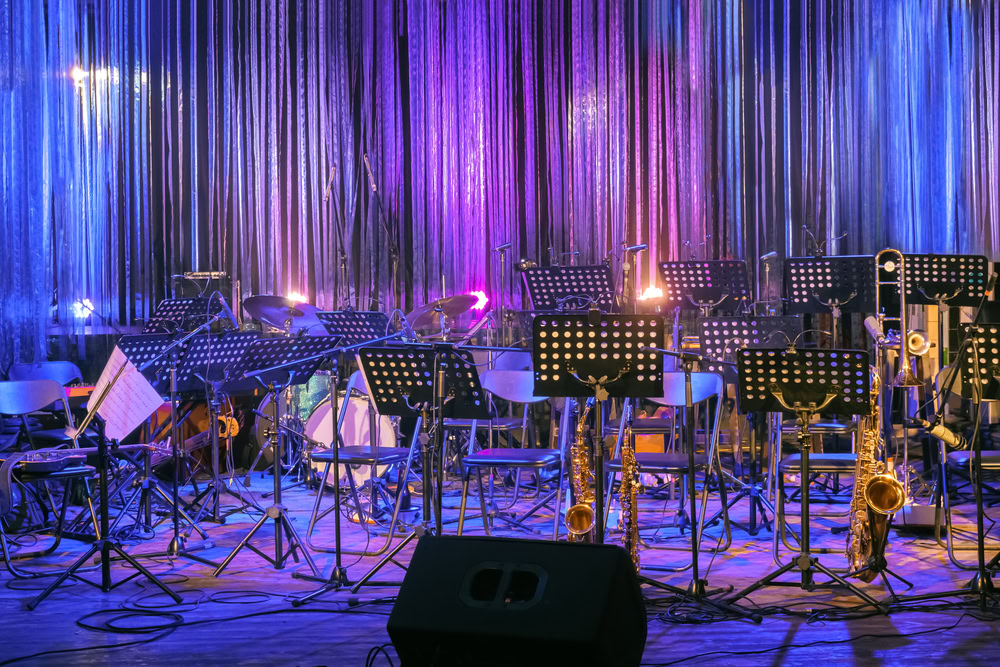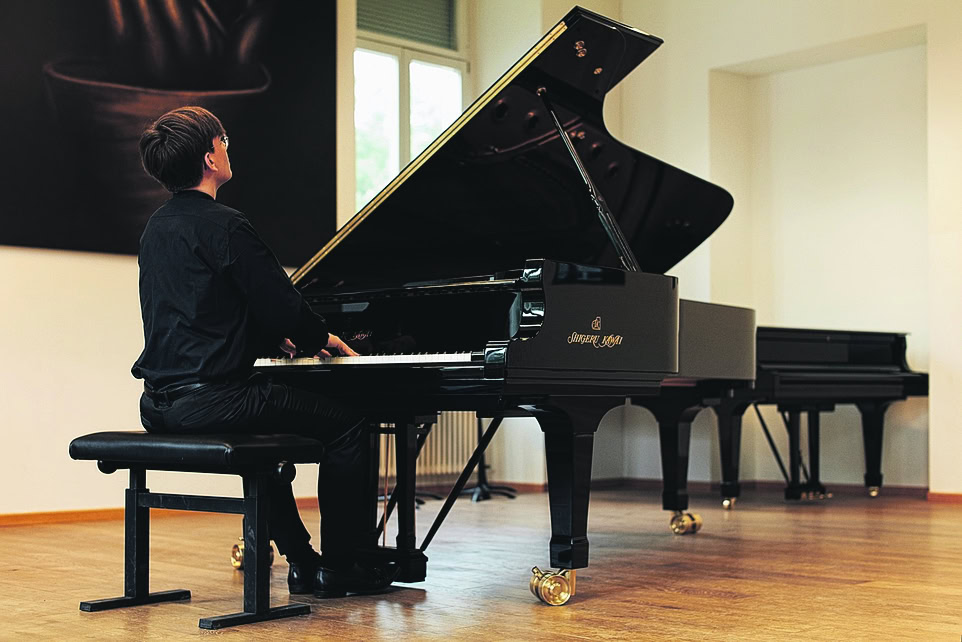The new CAS Suzuki Method 2 training course
Kalaidos University of Music is the first university in Switzerland to offer further education courses in the Suzuki
method. The interview was conducted by Suzuki instructor Agathe Jerie.
We ask three Suzuki teachers, Rachel Wieser, Nina Ulli and Deborah Furrer, why further training is worthwhile.
Why did you choose the Suzuki training program?
Rachel Wieser I wanted to learn a method to teach young children how to play against.
Nina Ulli I heard a Suzuki concert and was thrilled by the children's confident performance, their joy of playing and their high standard.
Deborah Furrer When I was a child, I knew a child who was taught Suzuki. I noticed that he had good posture and a clean tone. So the method made me curious even then.
What are the advantages and disadvantages of the method?
NU The great thing is that every child has the opportunity to develop skills to express themselves musically.
RW One disadvantage that is often mentioned is that Suzuki students are bad at reading music...
DF Not having to read music can be an advantage! This allows the focus to be on ear training, rhythm, intonation, posture, sound and expression. An early start is key. At no other age do children learn as quickly and intensively as at pre-school age.
What experiences have you had during your training?
RW On the one hand, we went into technical detail, and on the other, we looked at how to teach violin playing in the most child-friendly way possible.
NU The training is very well-founded and can be implemented in lessons right from the start.
DF You get lots of ideas for fun, visual and playful lessons.
How has the training changed your teaching practice?
RW I have learned to approach technical difficulties more efficiently and to communicate them in a fun way.
NU I feel more competent in technical and developmental issues, and teaching is more enjoyable because I can invest much more in the musical work thanks to the students' good intonation and rhythmic confidence.
DF The methodology has opened my eyes to the importance of simplicity and clarity. The early beginning needs recognition of the smallest steps. The child experiences a connection to the instrument and the music right from the start!
Has the training had an impact on your artistic work?
DF Yes, there were important new insights for my own game...
NU That surprised me! I would never have thought that the training would make me a better violinist.
RW Dealing with the basics of technology has also helped me to improve.
Has the training had an impact on your social life?
RW What I appreciate is the worldwide network of teachers. I've lived in various countries, currently in Sweden. You can find connections everywhere.
NU Yes, the Suzuki teachers are in active contact with each other. I have already made many friends this way.
DF Suzuki's approach that the community is important and everyone is valued and supported has a great influence on the teachers.
Why do you need several training courses?
DF The subject matter is too complex to learn in a short time. The Suzuki method is an educational task that needs to be reflected on time and again.
RW The method is based on a step-by-step approach. How the building blocks are treated in the pieces is not shown in the notes, this is taught during the training.
NU Traditional Suzuki training has five levels. The more of them you complete, the more everything fits into a larger whole.
AJ The five levels build on each other and are taught in four CAS further education courses, two of which can currently be offered.
What do you wish the Suzuki method for the future?
DF That aspiring musicians are given an insight into this method during their studies. It's great that Kalaidos as a university is now offering this training. I hope that more people understand what this way of learning and education is all about. It would be great if more teachers in Switzerland could be inspired to use other instruments. Other countries are already further ahead. Last April, over 1000 children came together in London to make music with a wide variety of instruments!
Further information can be found on the following page:








